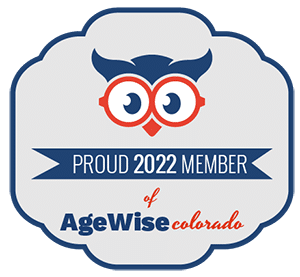Introduction: A Colorado Retirement Story
Meet John and Mary, a retired couple from Colorado Springs. They love their home with a beautiful view of Pikes Peak, but managing their finances on a fixed income has been challenging. Like many Colorado seniors, they are “house rich” but finding it harder to keep up with rising expenses. Their adult daughter suggests looking into a reverse mortgage to supplement their retirement income, but John and Mary hesitate – they’ve heard some scary reverse mortgage myths over the years. Will they lose their home? Is a reverse mortgage only for people in dire straits?
In this light-hearted yet informative guide, we’ll follow John and Mary’s journey and provide you with a comprehensive A–Z overview of reverse mortgages in Colorado. By the end, you’ll understand how reverse mortgages work, debunk common myths, and see how tapping into your home equity in retirement can help Colorado seniors live more comfortably. Let’s dive in!
Table of Contents
What Exactly Is a Reverse Mortgage?
A reverse mortgage is a special type of home loan for homeowners 62 or older (the minimum age in the U.S.) that allows you to convert part of your home’s equity into cash. Unlike a regular mortgage, you don’t make monthly payments to the bank. Instead, the lender pays you – either as a lump sum, monthly payments, a line of credit, or a combination. The loan is repaid later, typically when you sell the home or no longer live there.
For John and Mary, this means they could eliminate their current mortgage payments and receive money each month to help with bills, all while continuing to live in their beloved Colorado home. They would retain ownership of the house (the bank doesn’t take the title), and the debt would be repaid from the home’s value when they eventually move or pass away. Any remaining equity goes to them or their heirs.
Reverse mortgages are non-recourse loans, which is a fancy way of saying neither you nor your family can owe more than the home is worth when it’s time to repay. Plus, the funds you receive are generally tax-free because it’s loan money, not income. Of course, borrowers must keep up with property taxes, homeowner’s insurance, and basic home maintenance – responsibilities John and Mary have always handled.
Now that we’ve covered the basics, let’s walk through an A–Z guide of reverse mortgage terms and concepts to paint a full picture of how this financial tool can benefit Colorado retirees.
The A–Z of Reverse Mortgages
To give you the full scope of reverse mortgages, here’s an A–Z guide breaking down key terms, benefits, and requirements. (Don’t worry, we’ll keep it simple and jargon-free!)
- A – Age Requirement: You must be at least 62 years old to qualify for a standard reverse mortgage (HECM) in the U.S. This ensures the program helps seniors. For John and Mary, who are 70 and 68, age isn’t a barrier.
- B – Benefits: The primary benefit is no monthly mortgage payments while you live in the home. This can free up cash flow. Other benefits include the flexibility to receive funds in different ways and the ability to stay in your home and age in place.
- C – Counseling (HUD-Approved): Before getting a reverse mortgage, borrowers must attend independent counseling with a HUD-approved counselor. This step is required by law to make sure you understand the process, costs, and implications. John and Mary found their counseling session reassuring – it cleared up a lot of their concerns.
- D – Disbursement Options: Reverse mortgage funds can be taken as a lump sum, monthly payments (term or tenure), a line of credit, or a mix. For example, John and Mary might take a line of credit for emergencies and a small monthly payment to boost their income.
- E – Equity (Home Equity): Home equity is the portion of your home’s value that you own free and clear. A reverse mortgage lets you tap into your equity without selling the home. In Colorado’s hot housing market, many seniors have substantial equity tied up in their homes — this program helps unlock it.
- F – FHA Insured: Most reverse mortgages are Home Equity Conversion Mortgages (HECMs) insured by the Federal Housing Administration (FHA). FHA insurance protects borrowers (and their heirs) by guaranteeing you’ll receive your loan payments and that you won’t owe more than the home’s value when it’s time to repay.
- G – Growth of Line of Credit: If you choose a line of credit, the unused portion can actually grow over time. That means if John and Mary don’t use all their funds right away, their available credit increases (a nice perk for future needs).
- H – Home Equity Conversion Mortgage (HECM): The formal name for the standard reverse mortgage program. HECM loans are regulated and insured by the government. For Colorado seniors, HECMs are the most common reverse mortgage, offering strong consumer protections.
- I – Interest (Accruing Interest): You don’t make mortgage payments, so interest on a reverse mortgage accrues over time and gets added to the loan balance. The interest rate can be fixed or adjustable depending on your loan type. John and Mary chose an adjustable rate, knowing they aren’t making payments out of pocket.
- J – Jumbo Reverse Mortgage: Have a high-value home above the normal HECM limit? Jumbo reverse mortgages (proprietary loans) are available for pricier Colorado homes. They allow larger withdrawals, though terms can differ and they aren’t FHA-insured.
- K – Key Requirements: To keep a reverse mortgage in good standing, you must meet some key obligations. Keep the home as your primary residence, pay your property taxes and insurance on time, and maintain the home. John and Mary understand that if they fail to pay taxes or let insurance lapse, the loan could become due. But these are things responsible homeowners do anyway.
- L – Loan Limit: The HECM program has a lending limit (around $1.1 million) that determines the maximum home value considered for your loan. Even if your Colorado home is worth more, the benefit is capped at the limit for HECMs (jumbos can go higher). Also, how much you can actually borrow (principal limit) depends on factors like your age, home value, and interest rates.
- M – Mortgage Insurance Premium (MIP): HECMs have an upfront and annual insurance premium. This fee goes to the FHA and is what makes the loan non-recourse and guarantees you receive expected funds. It’s a cost to be aware of, typically financed into the loan, but it provides important protections.
- N – Non-Recourse: A critical feature of reverse mortgages is that they are non-recourse loans. Neither you nor your heirs will ever have to pay back more than the home’s value when the loan comes due. If the sale of the home doesn’t cover the full loan balance, FHA insurance covers the difference. John and Mary found peace of mind knowing their kids won’t inherit reverse mortgage debt.
- O – Occupancy: You must live in the home as your primary residence. If you move out permanently (e.g. to a nursing home or to live with family), the loan will eventually need to be repaid. There’s usually a one-year grace period if a medical issue arises. Part of John and Mary’s plan is to stay in their home for as long as possible, so this works for them.
- P – Property Types & Upkeep: Eligible properties include single-family homes and FHA-approved condos, among others. In Colorado, many seniors have single-family houses or townhomes that qualify. You’re responsible for property upkeep. Routine maintenance, paying HOA dues, and keeping the home in good repair are required. Essentially, you can’t let the house fall into disrepair or you risk default.
- Q – Qualifications (Financial Assessment): Lenders will do a financial assessment during the application. Don’t worry, you don’t need high income or perfect credit scores like a traditional loan, but they want to ensure you can pay taxes and insurance going forward. This assessment helps prevent defaults. Most Colorado borrowers, including John and Mary, easily meet this test, especially if they’re already covering their bills before the reverse mortgage.
- R – Right for You? Reverse mortgages aren’t one-size-fits-all. They work best as part of a broader retirement plan. It’s wise to consider your goals: Do you want to stay in your home long-term? Do you need extra cash flow or a safety net for expenses? John and Mary evaluated their needs and realized that, yes, it aligns perfectly with their goal to remain in their Colorado home and improve their monthly cash flow.
- S – Safeguards: Modern reverse mortgages come with built-in safeguards. Besides mandatory counseling, there are rules like caps on interest rates for adjustables and protections for eligible non-borrowing spouses (so a younger spouse can stay in the home if the older borrower passes away first). These safeguards mean John and Mary can enter the loan with more confidence and less fear of nasty surprises.
- T – Tax-Free Proceeds: Money from a reverse mortgage is generally tax-free. It’s not considered income but a loan advance. So it won’t increase your income tax or affect Social Security benefits. (As always, consult a tax advisor for personal advice, but John and Mary were relieved to learn their reverse mortgage payouts won’t be taxed.)
- U – Unlocking Home Equity: Think of a reverse mortgage as unlocking a treasure chest. For years, John and Mary diligently paid down their mortgage, building equity. Now they can unlock that home equity to use for retirement needs – whether it’s covering medical costs, traveling to see grandkids, or just having a cushion for peace of mind.
- V – Variable vs. Fixed Rates: Reverse mortgages can have either type of interest rate. Fixed-rate loans typically require taking a lump sum at closing. Variable-rate loans offer more flexibility (like lines of credit or monthly payouts). John and Mary opted for a variable rate HECM so they could set up a line of credit and not take more money than needed initially.
- W – Who Keeps the Home? You do! One big misconception is that the bank owns your home in a reverse mortgage. In reality, you retain the title. You’re simply borrowing against your equity. Just like a traditional mortgage, the lender places a lien (to ensure they get repaid) but your name stays on the deed. John and Mary still proudly call it their home.
- X – Xtra Flexibility: (Okay, we cheated a little on the spelling!) A reverse mortgage provides extra flexibility in retirement planning. It’s like having an additional financial resource in your back pocket. Whether an unexpected expense pops up or you want extra cash for fun activities, you have options. This X-factor of flexibility is what attracted John and Mary the most – it gives them control over when and how to use their equity.
- Y – Years in Your Home: A reverse mortgage works best if you plan to stay in your home for many years. The longer you stay, the more value you get from eliminating payments and benefiting from any appreciation. Fortunately, Colorado is where John and Mary want to remain. They get to enjoy their retirement years right where they are, without financial stress.
- Z – Zero Monthly Payments: Perhaps the most well-known feature: you owe zero monthly mortgage payments to the lender. This doesn’t mean “free money” – interest is simply added to the loan balance. But not having to write a mortgage check each month is a huge relief for retirees on a budget. John and Mary used the slogan “Z is for Zero payments” to explain the reverse mortgage to their skeptical friends, much to everyone’s delight!
Whew! We made it from A to Z. By now, you can see how comprehensive the reverse mortgage program is. John and Mary certainly learned a lot – and they grew more comfortable with the idea that a reverse mortgage could be a financial game-changer for their retirement.
Debunking Common Reverse Mortgage Myths
Despite the benefits, many myths persist about reverse mortgages. Let’s clear up a few of the big ones in plain language:
Myth: “The bank will own my home, and I could be forced out.” Reality: False. You remain the owner of your home. The bank doesn’t take your title – they simply have a lien, just like any mortgage. As long as you fulfill your obligations (living in the home, paying taxes and insurance, basic upkeep), you cannot be forced to leave. John and Mary were relieved to learn they can stay in their home indefinitely.- Myth: “My kids will be stuck with debt or lose the house when I die.” Reality: Not true. Reverse mortgages are non-recourse, meaning the lender can only be repaid from the home’s value – not from you or your heirs personally. Your children won’t inherit debt. In fact, heirs can choose to keep the home (by paying off the loan, often by refinancing) or sell it. Either way, any remaining equity after the loan is repaid goes to your heirs. The house doesn’t just “go to the bank.” John and Mary discussed this with their daughter, who was happy to know she can still inherit their home or the leftover value from it.
- Myth: “Reverse mortgages are a last resort for the desperate.” Reality: While it’s true that reverse mortgages can help seniors who are struggling, they’re not only for the desperate. Many financially comfortable retirees in Colorado use reverse mortgages as a smart planning tool – for example, to delay tapping other investments, to have an emergency fund, or to buy a new downsized home without monthly payments. It’s a legitimate option endorsed by many financial planners when used correctly. John and Mary initially worried about a stigma, but they learned that even well-off neighbors in Colorado Springs had gotten reverse mortgages to enhance their retirement lifestyle.
- Myth: “It’s too expensive because of high fees and interest.” Reality: Yes, there are fees (like origination and mortgage insurance) and the interest adds up over time. But every mortgage has costs. The key is value for money. The fees are often financed into the loan, meaning no out-of-pocket cost upfront. And remember, you’re not making monthly payments, so interest accrues in the loan balance. For many, the net benefit of improved cash flow and financial security outweighs the costs. In John and Mary’s case, eliminating their $1,200/month mortgage payment and getting an extra $500/month from the reverse mortgage made a huge positive difference – far more than the cost of the loan.
- Myth: “I’ll lose my Social Security or Medicare if I get a reverse mortgage.” Reality: Good news – Social Security and Medicare are not affected by receiving reverse mortgage funds. The money from a reverse mortgage isn’t considered income; it’s loan proceeds. So it won’t reduce your Social Security benefits or affect Medicare. (It could potentially affect need-based programs like Medicaid down the line if you keep a lot of cash from the loan in the bank, but there are ways to manage that. Always consult a professional for personal advice.) For most Colorado seniors, this isn’t an issue at all.
By debunking these myths, John and Mary felt much more confident. They realized a reverse mortgage is simply a financial tool – not a trick or trap – and when used wisely, it can greatly improve retirees’ quality of life.
Putting Home Equity to Work: How Reverse Mortgages Help Colorado Seniors
Colorado is a special place to retire. Between the gorgeous mountain scenery and vibrant communities from Denver to Boulder to Colorado Springs, it’s no wonder many folks want to stay in their homes here for life. The challenge is that the cost of living and healthcare can be high, even if you’ve paid off (or nearly paid off) your home. That’s where a reverse mortgage truly shines – it turns your home equity into a usable resource without having to leave home.
Here are a few ways Colorado retirees like John and Mary can use a reverse mortgage to manage money wisely or unlock new opportunities:
Eliminate an Existing Mortgage: Paying off an existing home loan with a reverse mortgage means no more monthly mortgage payments. This instantly improves cash flow. For many, including our Colorado Springs couple, this is the single biggest relief – freeing up hundreds or thousands of dollars each month.- Cover Healthcare and Aging-in-Place Costs: Whether it’s funding in-home care, modifying the house (think stair lifts, walk-in tubs, or ramps), or paying medical bills, home equity can cover it. Rather than pinch pennies or dip into savings, John and Mary could use reverse mortgage funds to install a main-floor bedroom and ramp, ensuring they can comfortably age in place.
- Supplement Retirement Income: Many Colorado seniors live on Social Security and maybe a small pension. A reverse mortgage can provide extra income each month to cover routine expenses, cope with inflation, or just enjoy life a bit more. It’s like getting a retirement bonus from your home. John and Mary plan to use their reverse mortgage to supplement their Social Security, so they don’t have to stress when utility bills or groceries go up.
- Create an Emergency Fund: Life is full of surprises – a new roof, car repairs, or helping a family member in need. A line of credit from a reverse mortgage stands by as an emergency fund growing over time, so you have a safety net for the unexpected. Knowing this gave John and Mary immense peace of mind.
- Enjoy Leisure and Family Time: Retirement should be enjoyable! Some borrowers use funds to travel, visit grandkids, or pursue hobbies. After years of hard work, you deserve some fun. John and Mary, for instance, set aside a small portion of their reverse mortgage funds for an RV trip around the Western U.S. – a lifelong dream they can now fulfill, thanks to their home equity.
It’s clear that a reverse mortgage isn’t about “desperation” – it’s about empowerment. It lets Colorado homeowners take control of their finances by using the wealth they already have in their house. And remember, Colorado home values have been on the rise in places like Denver and Fort Collins, so there’s a good chance your equity has grown significantly over the years. A reverse mortgage simply lets you benefit from that growth without selling your home.
Ready to Explore Your Reverse Mortgage Options in Colorado?
John and Mary’s story has a happy ending. They secured a reverse mortgage on their Colorado home with the help of a knowledgeable professional – and now they have the financial freedom to enjoy their Colorado lifestyle, worry-free. You too might be wondering if this is the right move for you or your parents. The best way to find out is to get personalized advice for your situation.
Kevin A. Guttman, a Certified Reverse Mortgage Professional based here in Colorado, has over 15 years of experience helping seniors unlock their home equity safely and smartly. As a local expert, Kevin has guided many families through the reverse mortgage process (including folks in Denver, Colorado Springs, and all over the state). He and his team pride themselves on honest, down-to-earth communication and exceptional service.
Take the next step: Contact Kevin A. Guttman today for a friendly, no-obligation consultation. Kevin will happily answer your questions and help you assess if a reverse mortgage is right for you. You can also try our quick Reverse Mortgage Home Equity Quiz to see how tapping into your home equity might enhance your retirement.
Remember, a secure and stress-free retirement could be just a phone call or click away. Don’t let myths or unknowns hold you back from exploring this opportunity. As John and Mary discovered, the Reverse Mortgage Revolution can be a game-changer for Colorado seniors looking to retire on their own terms.
- Visit Our Homepage – Learn more about reverse mortgage solutions and services for Colorado homeowners.
- Take the Reverse Mortgage Quiz – Answer a few questions to find out if a reverse mortgage aligns with your needs.
- Contact Kevin A. Guttman – Get expert guidance and a personalized reverse mortgage assessment.
Empower your retirement by making informed choices. With the right knowledge and a trusted guide by your side, you can enjoy all that Colorado has to offer in your golden years, without financial worry. Reverse mortgages are helping John and Mary – and many of your neighbors – achieve a secure, comfortable retirement. It might be time to see what it can do for you!




















